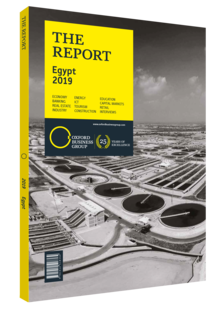New regulations to govern Egypt’s new sovereign wealth fund
In March 2019 Prime Minister Mostafa Madbouly issued a set of regulations to govern Egypt’s new sovereign wealth fund (SWF), a LE200bn ($11.2bn) pool of assets wholly owned by the Egyptian government, created as a tool to contribute to the nation’s sustainable economic development. Its formulation has been a slow process. Although plans for the SWF were first approved in 2015, it spent the following years being worked on by the Ministry of Planning, before it was nodded through Parliament in July 2018. The fund’s capital and the issued capital are LE200bn ($11.2bn) and LE5bn ($281m), respectively. The larger figure would establish an asset base towards the bottom of the global SWF index, and is considerably more modest in size than some of the MENA region’s wealthy oil and gas exporters: the Qatar Investment Authority has around $320bn worth of assets in its global portfolio, while Saudi Arabia has an estimated $514bn in its SAMA Foreign Holdings – the kingdom’s pool of foreign currency reserves – as well as almost $300bn in its Public Investment Fund.
Initial Strategy
Egypt, unlike its Gulf neighbours, does not have the regular, large budget surpluses that normally power SWFs. Therefore, the establishment of the Tahya Masr (or “Long Live Egypt”) Fund – a state-owned fund launched during the wave of patriotic fervour that followed the ousting of President Mohamed Morsi – raised questions from the moment it was first suggested. After the election of President Abdel Fattah El Sisi in June 2014, the new government explored a number of potential options for an investment vehicle that would allow it to support economic development in the country, and settled on an answer to the challenge in the simplest way possible: with the opening of a bank account in which Egyptians could deposit money to be used on projects for the nation’s benefit. Within the first two weeks of the launch of the Tahya Masr in 2014, around LE400m ($22.5m) was raised, with sizeable donations coming from a variety of stakeholders, including construction firms, leading businessmen, state-owned and private financial institutions, and Cairo University. By August 2014 a member of the fund’s board of directors was able to report that the initiative would attract in excess of LE5bn ($281m). In April 2015 the fund released some details on a range of projects it will finance in partnership with government institutions, including hepatitis inoculation schemes, mobile clinics and the development of informal settlements.
However, by 2015, when the prospect of a more formal SWF was being discussed in the run-up to the Economic Development Conference held in Sharm El Sheikh that year, a new source of developmental financing was proposed: lacking a budget surplus of its own, Egypt would turn to its closest allies to help it establish a large national development fund, with initial financing coming from the Russian Direct Investment Fund and a range of SWF’s belonging to GCC states.
Home-Grown Asset
Four years on from the Sharm El Sheikh conference, Egypt’s new SWF has been established on a more sustainable base than grants and donations. The government has overcome its lack of a fiscal surplus to feed its fund by turning to its large number of unused resources. According to the Ministry of Finance, there are 4135 unused public buildings in Egypt, while the total value of the nation’s untapped assets lies somewhere between LE1trn ($56.2bn) and LE2trn ($112.4bn). Egypt’s new SWF will be fully authorised to acquire, lease and sell off any stateowned properties, including land, in order to meet its objectives. The fund may also establish companies, form joint ventures, inject capital into existing firms, purchase listed equities and invest in sovereign debt instruments, according to its establishing law. Given the breadth of its remit, the new facility represents a useful means by which the government can fully utilise the value of its assets to drive economic growth at this critical juncture of the nation’s economic reform.
You have reached the limit of premium articles you can view for free.
Choose from the options below to purchase print or digital editions of our Reports. You can also purchase a website subscription giving you unlimited access to all of our Reports online for 12 months.
If you have already purchased this Report or have a website subscription, please login to continue.

